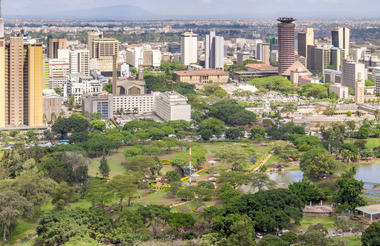
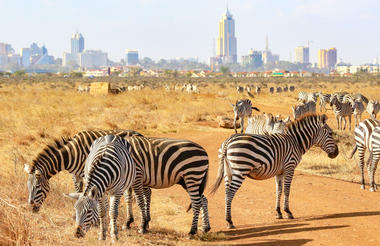
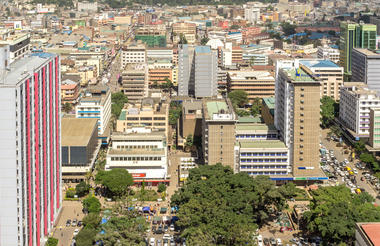
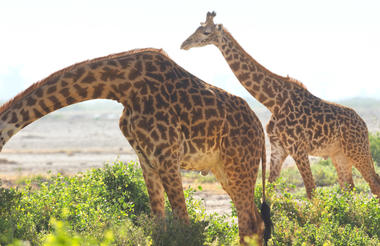
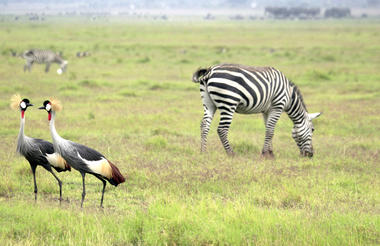
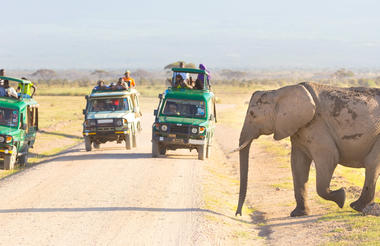
Your wildlife viewing safari begins with your departure from the USA and your arrival at Nairobi’s Jomo Kenyatta International Airport (flight not included). As you disembark from your aircraft, you’ll be met by a Tradewinds VIP representative, who will escort you through immigration, collect your luggage and assist you with clearing customs. The Tradewinds representative will introduce you to the members of your Origins Safaris team, who will drive you in a private vehicle to your relaxing overnight accommodations at the Ole Sereni Hotel, conveniently located at the edge of Nairobi National Park – just 15 minutes from the airport!
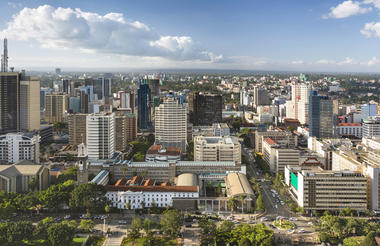
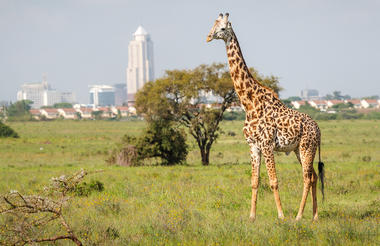
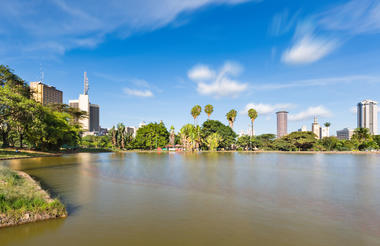
Today you’ll explore Karen, with visits to the Karen Blixen House Museum and the world-renowned Giraffe Centre available. The original owners of the adjacent Giraffe Manor, Jock and Betty Leslie-Melville, began raising a young Rothschild’s giraffe on their property in 1974. Recognizing the endangered status of these unique Western Kenyan giraffes, they established a breeding sanctuary, which today included the Giraffe Centre. You’ll learn about these amazing creatures and meet them “up close and personal.” Your itinerary today is flexible and other activities may be available.
In the afternoon, you’ll arrive at the David Sheldrick Trust Elephant Orphanage. We have arranged for you to adopt one of these young elephants and meet the young elephants who have been rescued and brought here to insure their survival. We have requested the 3pm private visit, which is currently unavailable. If the private visit doesn’t become available, you will visit the elephants at 5pm, the time set aside for those who have adopted an elephant.
David Sheldrick was the first chief ranger of Tsavo National Park. His wife, Daphne, often attempted to care for orphaned baby elephants but was initially unsuccessful. Through her perseverance, she eventually developed a substitute formula, which made it possible to truly rescue these young elephants. After David died, she created the Trust and founded the current orphanage. The young elephants are eventually returned to the wild in Tsavo National Park.
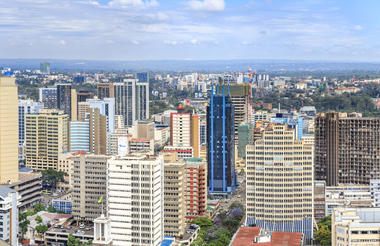
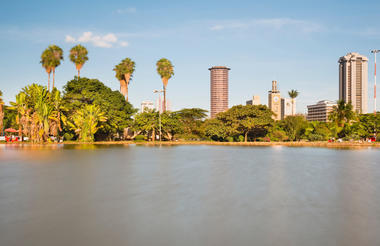
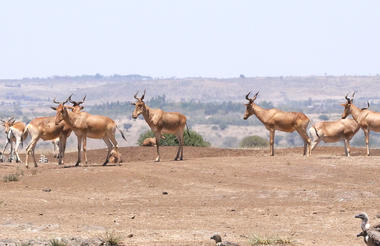
After breakfast, you will be transferred to Wilson Airport, where you board a light aircraft which will fly you past the towering peaks of Mt. Kenya and on to the Samburu National Game Reserve. This dramatic volcanic landscape is comprised mostly of semi-arid scrub. Permanent sources of water provide nourishment for the Samburu people, the wildlife, and small stands of acacia trees and doum palms. The Samburu people still live here as traditional pastoralists, at the edge of the region formerly known as “The Northern Frontier.”
The Reserve and its sister, the Buffalo Springs National Game Reserve, are situated on either side of the Ewaso Nyiro River, where herds of elephants and scores of other animals, including reticulated giraffes, come to drink. Except near the river, the land is dry for much of the year.
Samburu’s wildlife is uniquely adapted to this semi-arid habitat, and you will find animals here that are not found elsewhere in your travels. The highly endangered Grevy’s zebra is only known to survive in this area of northern Kenya. Gerenuk, slender antelopes with elongated necks, stand on their hind legs to browse the middle branches of acacia shrubs – the branches the reticulated giraffes leave alone.
Another highly adapted species is the Beisa oryx, a robust antelope with long straight horns, which are often assumed to be the origins of the legend of the unicorn. Africa’s smallest antelope, the dik dik, is also found here. Standing only about 16 inches high, pairs of these shy, monogamous antelope can be seen grazing on the lower branches of the vegetation growing along the river’s banks.
During the dry season, the concentration of wildlife on the banks of the river brings the region’s predators in search of food. Lion and cheetah are commonly seen within short distances of the river.
This is one of the best places to search for the other major African predator – the leopard. With their nocturnal habits, leopards are notoriously difficult to find. Stanley will employ all his observational skills and knowledge of the leopard’s behavior to help in your quest to be among the few who have the privilege to view this elusive feline.
Your home for the next three nights will be Elephant Bedroom Camp. Set on the banks of the Ewaso Nyiro River, surrounded by doum palms and other beautiful indigenous trees and shrubs, the camp consists of only 12 tents - all furnished in rustic African style while offering all the comforts expected of a luxury camp (hot & cold running water, electricity and herbal products). Elephant Bedroom Camp is one of the smallest permanent camps in the area, providing an exceptional level of personal service. Delicious meals are served under the open African sky or in the relaxing dining room and each evening ends with a relaxing campfire and a recounting of the day’s adventures.



This morning’s drive takes you south to the Laikipia plateau – one of the last strongholds of romantic East Africa, with its vast open ranches shadowed by snow-capped Mount Kenya - and home to ethnically diverse communities, including the Mukogodo Maasai and Samburu. These indigenous communities have joined together in partnership with the settlers and ranchers to create a conservation and wildlife haven that spans two million acres of wild savannah.
Just before lunch you arrive at the gates of the Ol Pejeta Conservancy, a 90,000 acre sanctuary that was formerly a cattle ranch founded by the famous (some might say “infamous”) Lord Delamere during the heyday of Great Britain’s colonial period. In 2004, the entire property was purchased by Flora and Fauna International, a UK based conservation organization, creating the largest refuge for black rhinos in East Africa, with up to 79 black rhinos living within the Conservancy’s protected borders.
This is one of the few places remaining where it is still possible to see the legendary “Big Five” – elephant, rhino, leopard, lion, and Cape buffalo. Being on private land, you have the unique opportunity to get out of your vehicle and explore the African bush on foot, an experience not available
Your home in Ol Pejeta is Sweetwaters Tented Camp, a sheltered oasis, clustered around a water hole and set in the pristine calm of this private conservancy. Sweetwaters offers a charming blend of under-canvas ambiance and Kenyan safari luxury.
Located on the plains of Mount Kenya, the camp features thirty-nine luxury tents, each with its own private veranda overlooking the water hole. The central Rhino Restaurant is housed in the former manager's house of this once colonial farm and offers both regional and international cuisine. Also, within the house is the Kashoggi Bar and lounge, which centers on a blazing log fire. The Waterhole Bar, built in the style of a game-viewing hide, overlooks the waterhole and offers unrivalled wildlife-watching.
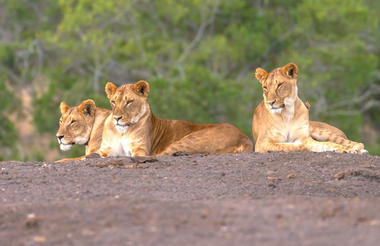
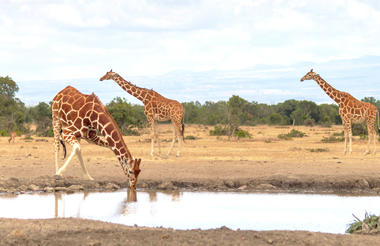
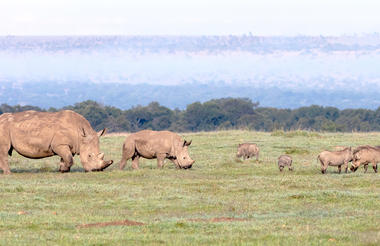
The roads that lead to today’s destinations are often in poor repair, making a long overland journey even longer. Therefore, you’ll board a light aircraft for a flight that takes you through the Great Rift Valley and on to the world famous Maasai Mara (flight included). Stanley will have left the previous afternoon and will be waiting for you when you land.
This is the northern portion of the famed Serengeti ecosystem and is appropriately known as the “Kingdom of the Lions.” These great predators rule over an area of rolling grasslands, woodlands, and riverine forests that exceeds 200 square miles. In July, the leading edge of the famed Great Serengeti Migration of approximately 2 million wildebeests zebras and Thomson’s gazelles usually begins to arrive in the Mara. The movement of these huge herds is always unpredictable but, with luck, you may witness a classic river crossing, as some of the herds congregate on the banks of the Mara and Talek Rivers, barriers they continually cross as they seek fresh grass.
The Mara is home to an amazing diversity of wildlife, including elephant, wildebeest, zebra, Maasai giraffe, impala, African buffalo, topi, hartebeest, Thomson’s gazelles, and Grant’s gazelles. It is this abundance of species that allows lions to proliferate. Some of the largest lion prides ever sighted in Africa have been found in the Mara. And, of course, other predators such as leopard, hyena, jackals, and eagles share in the bounty.
With its open grasslands, the Mara is one of the best places in Africa to follow a cheetah in anticipation of watching this sleek cat stalk its next meal. With persistence and a bit of luck, you may witness the stealth and the exciting burst of speed of the world’s fastest land animal in pursuit of its next meal.
Here, you may also visit with the local Maasai community. The Maasai, perhaps the best known and most colorful East African tribe, still follow their traditional ways as semi-nomadic pastoralists. Young warriors carry spears and decorate themselves with red ochre, and the women wear elaborate and beautiful beadwork. The social life of the Maasai makes them a fascinating and special people and you will see their herds and villages along your travels.
The Maasai Mara is the most popular wildlife destination in Kenya. Therefore, it’s important to carefully select the location of your accommodations, in order to maximize your game viewing opportunities and minimize the impact of tourists. Mara Ngenche Camp is uniquely positioned at the confluence of the Mara and Talek Rivers. Its location provides the perfect base from which to explore all of the Mara, while being removed from the high concentration of lodges and camps in the southern Maasai Mara.
Nestled within a riverine forest, each of Mara Ngenche’s twelve spacious tents offers a level of comfort seldom found in today’s African bush, complete with a four-poster bed, full en-suite bath (with a shower and a luxurious bathtub), electricity and an inspiring view from its own plunge pool. Its proximity to both rivers insures you’ll see a continual flow of wildlife from your tent, the lounge and the dining area.
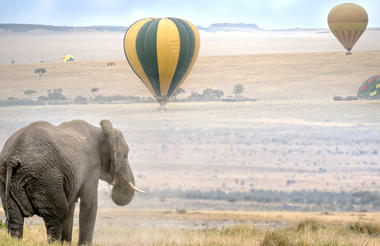
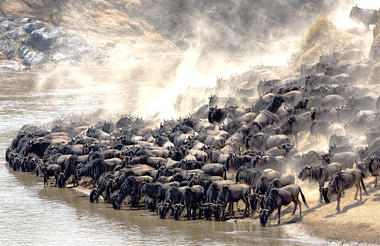
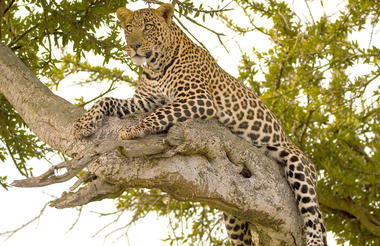
Bidding farewell to your guides and the African bush, you’ll fly in a light aircraft to Nairobi’s Wilson Airport (flight included). You’ll be taken to the Sheraton at Four Points, which is conveniently located at Jomo Kenyatta International Airport. You’ll enjoy lunch, have time to relax in your dayroom and make any last-minute preparations for your flight.
At the appropriate time, you’ll be transferred to the international terminal for your departing flight (flight not included). As your aircraft lifts off, you’ll look out the window for one last glimpse of Kenya, having enjoyed the hospitality and wonders of this magical part of Africa.





